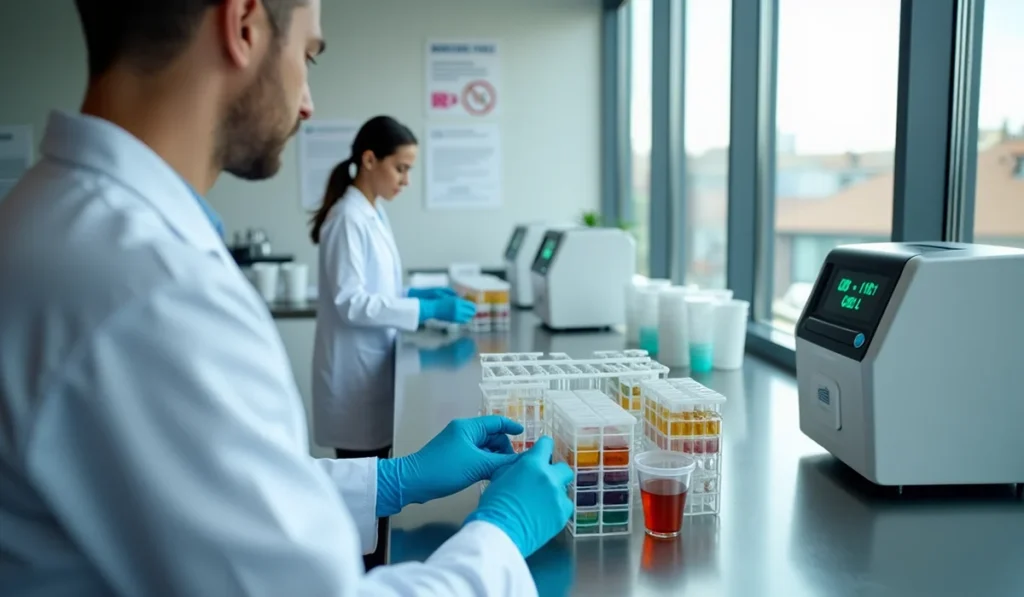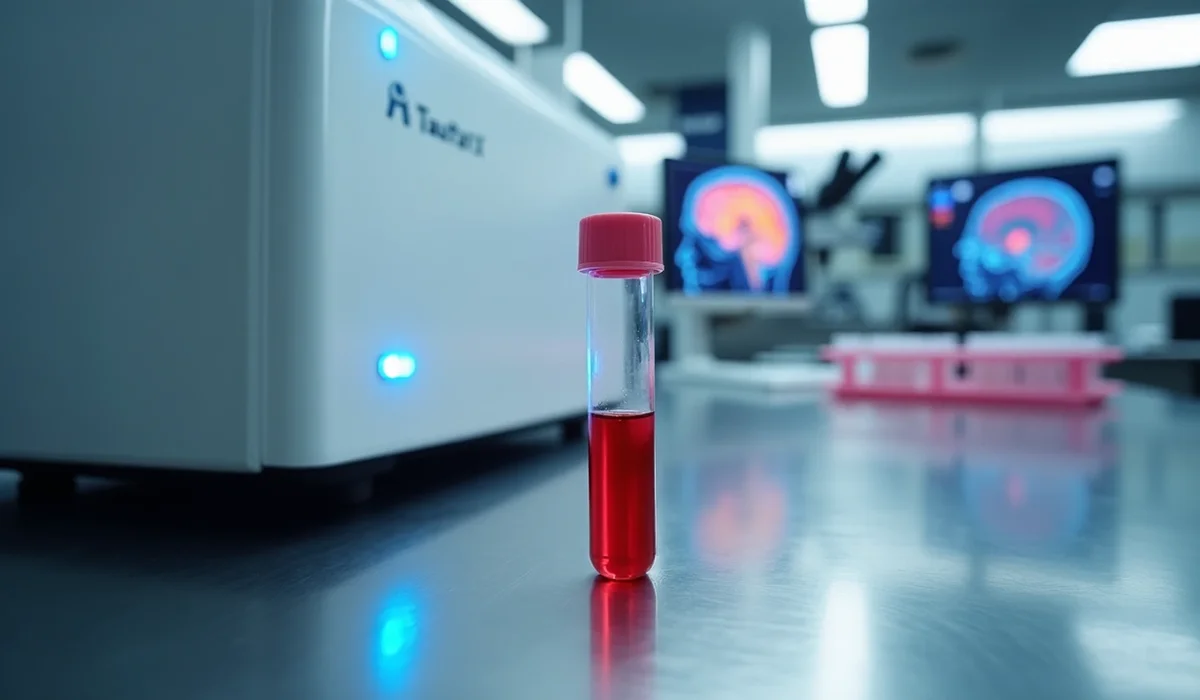Recent employee drug testing data shows a concerning pattern in 2021. The U.S. workforce’s overall positivity rate hit its highest point in 20 years at 4.6%. This represents a 31.4% jump from the record low of 3.5% during 2010-2012. The increase in positive tests is largely attributed to the rising potency and THC levels in cannabis products.
Drug testing companies now face major hurdles since marijuana became legal in 40 states by August 2023. Post-accident positivity rates for marijuana tested 63.4% higher than pre-employment tests in 2021. Many companies have started changing their approach to testing, particularly for high THC weed. A recent study found that 53% of drug testing providers said their clients removed marijuana from their testing panels in the last year. This marks a clear change in how workplaces screen their employees for cannabis use.
Survey Reveals 31% Surge in Positive Drug Tests Since 2010
Quest Diagnostics’ latest workplace drug testing analysis shows unprecedented changes in employee drug test results. The combined U.S. workforce had a positivity rate of 4.6% in 2023. This rate stands as the highest level we’ve seen in more than two decades [1]. Compared to the all-time low of 3.5% between 2010-2012, the current rate has jumped by more than 30% [1].
Quest Diagnostics Reports Record-Breaking Numbers
The analysis looked at about 8.4 million urine-based drug tests conducted in 2023 and revealed major changes across industries [2]. The finance and insurance industry saw a 35.7% rise in positive tests, going from 2.8% to 3.8% [1]. Public administration and real estate weren’t far behind, with increases of 24% and 22% respectively [2].
Marijuana Drives the Increase
Marijuana stands out as the main reason for these higher numbers. The general U.S. workforce’s marijuana positivity rate reached 4.5% in 2023. This marks a steady rise from 4.3% in 2022 and 3.1% in 2019 [2]. States with legal recreational marijuana use showed higher positivity rates:
- Recreational states: 5.7% positivity rate [3]
- National average: 4.3% positivity rate [3]
- Medical marijuana states: 3.2% positivity rate [4]
These changes go beyond routine screening, and post-accident marijuana positivity has reached worrying levels. Post-accident tests showed a 7.3% positivity rate in 2022, up from 6.7% in 2021 [2]. This represents a 204.2% rise in post-accident marijuana positivity in the last decade [2].
The retail sector leads these trends with a 131.4% jump in marijuana positivity over five years. The rate climbed from 3.5% in 2018 to 8.1% in 2022 [2]. The food service industry shows a similar pattern – its marijuana positivity increased by 102.5% during the same period [2].
Industries Report Varying Testing Adoption Rates
Drug testing adoption rates vary by a lot among different industries, with some sectors enforcing stricter protocols than others. The retail trade sector stands out with the highest overall positivity rate of 7% in 2021, showing a 34.6% increase since 2017 [5].
Retail Sector Leads with 7% Positivity Rate
The retail industry’s substance detection trends raise serious concerns. Methamphetamine positivity in this sector jumped by 55.6%, going from 0.09% in 2017 to 0.14% in 2021 [5]. The retail trade sector faces ongoing challenges with:
- Highest overall drug positivity at 7.7% in 2022 [6]
- Double-digit increases in marijuana positivity [5]
- Post-accident testing positivity shows sharp rise [7]
Transportation Shows 53.6% Testing Increase
The transportation sector deals with unique challenges under Department of Transportation (DOT) regulations. The Federal Motor Carrier Safety Administration keeps strict testing requirements, with random drug testing rates set at 50% and alcohol testing at 10% for 2025 [8]. These rates haven’t changed since 2020, when random drug testing doubled from 25% to 50% [9].
Manufacturing Adapts Testing Protocols
Manufacturing employers take different approaches to workplace testing. A complete survey shows that 94% of manufacturers have drug policies [10]. All the same, implementation varies by a lot:
- 81% conduct pre-employment screening
- 58% perform post-accident testing
- 28% use random drug testing [10]
The manufacturing sector’s changes include better safety protocols, especially when metal stamping and metal forming operations are involved. Post-accident testing has become standard practice in these areas [11]. These shifts mirror broader industry patterns, as 16 out of 17 industries showed increased overall positivity rates from 2017 to 2021 [5].
The employer and workplace drug testing market keeps growing, and the transportation segment should grow at 6.7% CAGR [12]. More commercial drivers and stricter safety regulations in all industries propel this growth [12].
Post-Accident Testing Uncovers Alarming Trends
Drug testing results after workplace accidents reveal a troubling trend in substance use. Data from Quest Diagnostics shows that positive marijuana tests after accidents reached 7.5% in 2023 across the U.S. workforce [13]. This increase is partly attributed to the rising potency of cannabis products and higher THC concentrations in cannabis samples.
Marijuana Positivity Hits 25-Year High
Positive marijuana tests after accidents keep climbing steadily. The numbers jumped by 114.3% between 2015 and 2023 [14]. The general U.S. workforce saw an increase from 6.7% in 2021 to 7.3% in 2022 [15].
These numbers match broader safety concerns in the workplace. A newer study, published in 2024 by the Journal of the American Medical Association, found that states allowing recreational marijuana sales saw workplace injuries rise by 10% among workers aged 20-34 years [1]. This increase may be related to the psychoactive effects of high THC weed and its impact on brain development.
58.7% Higher Rates Than Pre-Employment Tests
Tests after accidents show much higher positive rates than pre-employment screening. The numbers tell a stark story:
- Marijuana positivity rates are 58.7% higher in post-accident tests
- Cocaine positivity shows up 230% more often compared to pre-employment screening
- Overall positivity after accidents rose 22.6% over five years, from 8.4% in 2018 to 10.3% in 2022 [15]
The federally mandated safety-sensitive workforce faces stricter rules but shows similar patterns. Positive marijuana tests in this sector jumped 16.7% year-over-year, from 1.8% in 2021 to 2.1% in 2022 [15]. The rate stays lower than the general workforce, but the upward trend raises safety concerns.
The link between positive tests after accidents and workplace incidents becomes clearer in specific industries. The transportation sector requires testing within 32 hours of accidents that result in deaths, injuries needing medical care, or towed vehicles [16].
These results reflect society’s changing views on marijuana use, according to Keith Ward, general manager at Quest Diagnostics: “This historic rise suggests that changing societal attitudes about marijuana may be affecting workplace behaviors” [4]. The data shows without doubt that employers face growing challenges as they try to keep workplaces safe while adapting to new drug use patterns, including the consumption of high-potency cannabis products and edibles.
Companies Struggle with Testing Decisions
Drug testing policies at work face major changes as companies deal with new marijuana laws. A complete industry survey shows 53% of drug testing providers say their clients no longer test for marijuana. Companies made this choice because they struggled to hire people [17].
73% Think Over Dropping Marijuana Testing
Several reasons push companies to change their testing rules. Here’s why employers want to stop marijuana screening:
- 63% can’t find enough qualified candidates [17]
- 42% worry about legal problems from job seekers [17]
- 27% aren’t sure if testing is legal in their state [17]
- 14% don’t want to know about marijuana use [17]
Beyond hiring problems, half the providers believe companies that stop marijuana testing won’t go back [17]. This points to bigger changes at work. Already, 15% of employers have completely stopped drug testing before hiring [18].
Legal Issues Push Policy Updates
Companies with drug testing programs face a complex legal maze. Businesses that operate in many states must deal with different rules in each place [19]. State laws decide if a company can test for cannabis:
New York won’t let companies test current or future employees for cannabis [19]. Georgia lets companies keep strict no-drug policies [19]. Nevada stops companies from rejecting candidates just because they test positive for cannabis [19].
The U.S. Department of Transportation requires mandatory testing, whatever state laws say [20]. These federal rules override local laws, which makes things harder for nationwide businesses [19].
New testing rules need careful planning. Companies must pick the right testing methods based on each job [21]. Some employers now treat office workers differently from factory workers when it comes to testing [21].
State privacy laws make things even more complex [19]. Illinois calls cannabis a ‘lawful product,’ which affects worker privacy rights [19]. Companies must balance safety needs with employee privacy, especially in states that allow medical marijuana [22].
Technology Transforms Drug Testing Landscape
Advanced technologies are reshaping drug testing methods as employers look for quicker and more accurate screening solutions. The U.S. Department of Transportation approved oral fluid testing in May 2023. This marks a major change in workplace screening practices [2].
Oral Fluid Testing Gains Popularity
Oral fluid testing has become a preferred alternative to traditional urine screening methods. The DOT’s final rule lets employers choose between urine and oral fluid tests for all regulated drug screenings [2]. This testing method offers several benefits:
- Direct observation during collection reduces tampering risks
- Recent drug use can be detected immediately
- Non-invasive collection process
- Simple sample collection procedures
- Better detection of parent drugs versus metabolites [23]
Today, 87% of workforce drug testing providers offer oral fluid testing, up from 39% in 2019 [24]. About 46% of providers expect oral fluid testing to become the main method and replace traditional urine testing [24].
Real-Time Detection Methods Emerge
New rapid drug analysis technologies show promising advances in detection capabilities. The National Institute of Standards and Technology reports that new analytical methods deliver complete results within 48 hours [25]. These methods use ambient ionization mass spectrometry to screen for drugs, adulterants, and cutting agents [25].
Portable biosensor technology has improved real-time drug detection capabilities. These unobtrusive electronic devices detect vital physiological parameters, including:
- Electrodermal activity
- Three-dimensional body movement
- Skin temperature variations [3]
Data streams wirelessly to smartphones and allows immediate intervention when needed [3]. These devices show great promise in detecting intravenous drug use through notable biometric changes [3].
AI-Powered Screening Solutions Advance
AI reshapes drug screening processes through better accuracy and efficiency. Machine learning algorithms analyze complex datasets to find patterns invisible to human analysts [26]. These AI systems achieve up to 97% accuracy in identifying promising drug candidates [26].
AI-powered platforms streamline the testing process through:
- Automated result interpretation
- Pattern detection in large datasets
- Better accuracy in testing procedures
- Predictive analytics for risk assessment [26]
Advanced analytical techniques, including tandem mass spectrometry, now improve test reliability by reducing false positives and negatives [27]. These systems learn continuously from new data and refine their processes to maintain innovative drug testing methodologies [27].
Pre-employment drug positivity increased 17.4% among U.S. workers over the last several years [28]. Organizations now adopt AI-enabled platforms that combine artificial intelligence and machine learning capabilities to deliver accurate testing results while minimizing human error [28].
Conclusion
Drug testing data from U.S. companies reveals workplace substance use challenges. The record-high 4.6% positivity rate shows a fundamental change in employee behavior and company policies. Marijuana legalization leads these changes and companies now need to rethink their testing strategies, especially considering the increasing potency of cannabis products and varying THC levels.
Recent post-accident testing numbers raise serious concerns. Marijuana positivity rates hit 7.5% in 2023, which needs immediate attention since workplace safety remains crucial in every industry. New technology brings hope through better testing methods. AI-powered solutions and oral fluid testing are leading this innovation in cannabis potency monitoring.
Companies now struggle to balance their safety needs against hiring challenges. Many organizations have removed marijuana from their testing panels. However, federal rules still require detailed screening for safety-sensitive jobs, particularly in light of the psychoactive effects associated with high THC percentages in cannabis flower.
The drug testing world keeps changing. Employers should stay updated about new technologies, regulations, and best practices. These developments help create a future where workplace safety works alongside practical testing policies, taking into account the complexities of cannabis use disorder and the impact of cannabis commercialization.
References
[1] – https://www.carriermanagement.com/news/2024/05/15/262161.htm
[3] – https://pmc.ncbi.nlm.nih.gov/articles/PMC4371024/
[4] – https://www.cbsnews.com/news/marijuana-workplace-tests-25-year-high-quest/
[7] – https://innovation.premierbiotech.com/drug-positivity-increase/
[9] – https://www.ttnews.com/articles/fmcsa-drug-testing-rate-drivers
[10] – https://plasticsbusinessmag.com/articles/2018/manufacturers-address-drugs-in-the-workplace/
[11] – https://corporate.findlaw.com/human-resources/drug-and-alcohol-policies-manufacturing-employer.html
[12] – https://www.grandviewresearch.com/industry-analysis/employer-workplace-drug-testing-market-report
[13] – https://www.workingpartners.com/2024-workplace-drug-testing-trends-report-released/
[14] – https://www.ndwa.org/news/findings-from-the-2024-quest-diagnostics-drug-testing-index/
[16] – https://www.platinumdrivers.com/pre-employment-vs-post-accident-drug-test/
[18] – https://wtop.com/business-finance/2023/07/a-growing-number-of-companies-drop-marijuana-drug-testing/
[19] – https://pro.bloomberglaw.com/insights/labor-employment/cannabis-and-the-workplace/
[20] – https://hrexecutive.com/are-new-cannabis-laws-affecting-your-companys-hiring-success/
[21] – https://www.thompsonhine.com/insights/in-the-weeds-marijuana-legalization-and-drug-testing-at-work/
[22] – https://pmc.ncbi.nlm.nih.gov/articles/PMC8864412/
[23] – https://www.hireright.com/blog/exploring-the-advantages-of-oral-fluid-testing
[24] – https://blog.employersolutions.com/oral-fluid-testing/
[26] – https://www.ucf.edu/news/ai-based-screening-method-could-boost-speed-of-new-drug-discovery/
[27] – https://testsmartlylabs.com/drug-alcohol-testing-advancements/





